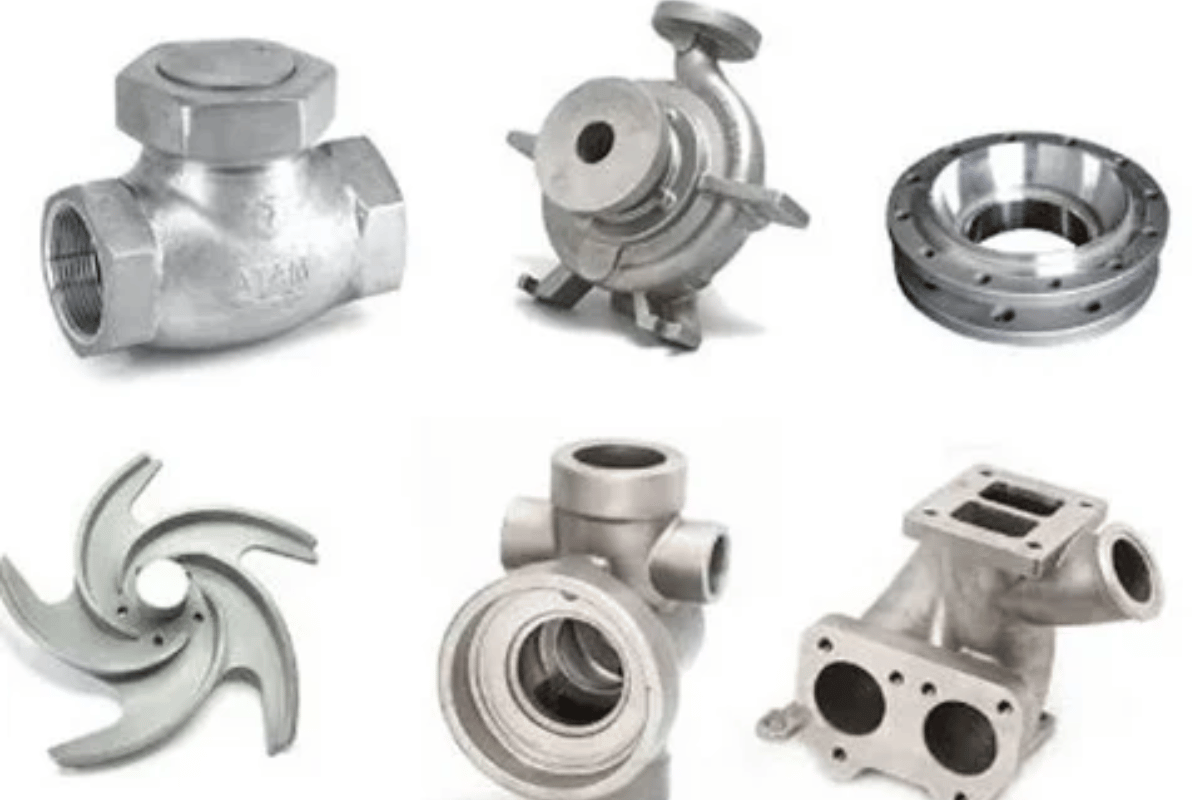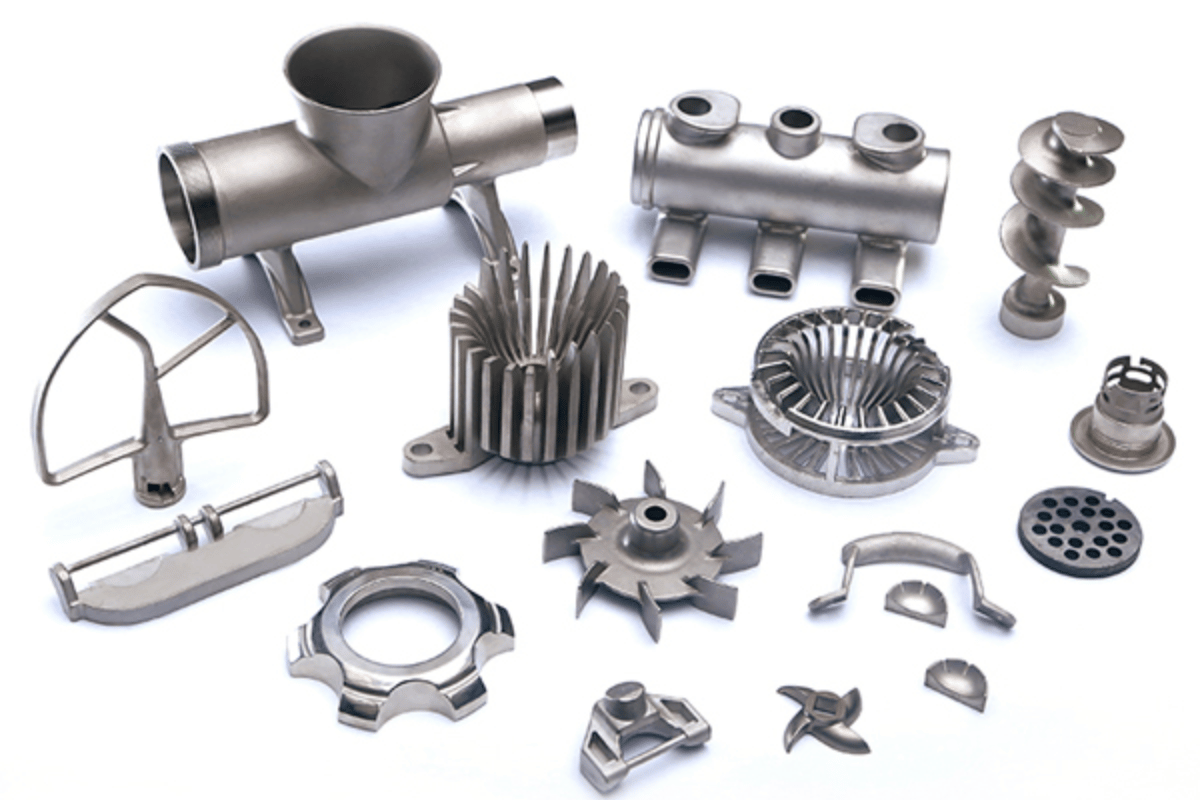The realm of manufacturing has undergone a profound transformation with the advent of investment casting SS304—a fusion of technology and artistry that has redefined precision engineering. At its heart lies the remarkable integration of Computer Numerical Control (CNC) machining within the intricate tapestry of investment casting, yielding a synergy that elevates custom precision to unparalleled heights.
Significance of CNC Precision in Investment Casting SS304
In the modern landscape of industrial fabrication, the significance of investment casting SS304 cannot be overstated. This method harnesses the potential of CNC precision to create components with intricate geometries and exceptional accuracy. The marriage of these two technologies has revolutionized industries ranging from aerospace to medical devices, ushering in a new era of customized precision.
Overview of Investment Casting and its Importance
Investment casting, a technique with historical roots tracing back centuries, has evolved into a cornerstone of precision engineering. Its essence lies in the creation of intricate wax patterns, encased within ceramic shells, to ultimately be transformed into intricate metal components. The introduction of CNC machining further enhances this process by infusing it with the precision of digital design and SS304 stainless steel’s mechanical prowess.
Role of CNC Machining in Enhancing Investment Casting SS304
CNC machining, empowered by digital control systems, imparts a level of accuracy and predictability that harmonizes seamlessly with investment casting. The choice of SS304 stainless steel amplifies the process, offering robust mechanical properties and corrosion resistance. This duo of CNC precision and SS304 synergy forms the bedrock of this transformative manufacturing technique.
With these foundational insights, we delve into the intricacies of CNC precision within the domain of investment casting, exploring the convergence of two dynamic forces that redefine precision and fabrication. Through this journey, we shall uncover the advantages, technical considerations, and future potentials of this innovative amalgamation.

Understanding CNC Precision in Investment Casting
Exploring CNC (Computer Numerical Control) Machining
CNC machining, driven by computerized instructions, represents the pinnacle of automated precision. It involves the utilization of computer-aided design (CAD) to guide machining tools, resulting in intricate shapes and exact dimensions. The fusion of CNC machining with investment casting introduces a new dimension of accuracy to an already refined process.
The Intersection of CNC Machining and Investment Casting
The marriage of CNC machining and investment casting is where digital precision converges with the art of creating complex metal parts. The intricate patterns that define investment casting can now be executed with unparalleled accuracy, as CNC machines meticulously sculpt materials with microscopic fidelity. This intersection not only ensures intricate patterns’ faithful reproduction but also enables the creation of components that were once deemed too intricate to manufacture.
Advantages of CNC Precision in Investment Casting SS304
The advantages bestowed by CNC precision in investment casting are manifold. Firstly, it eliminates the limitations imposed by traditional tooling, allowing for rapid design iterations and reduced lead times. Secondly, the adaptability of CNC machines enables the creation of complex geometries, enhancing the freedom of design. Furthermore, the accuracy achieved through CNC machining ensures the faithful translation of intricate patterns into the final metal component. This level of precision directly impacts industries that demand impeccable quality and performance.
As we delve deeper, we’ll explore the technical nuances that underpin the successful fusion of CNC precision with investment casting, shedding light on material selection, design optimization, and tooling considerations. Through this exploration, a comprehensive understanding of the factors driving this innovative technique will emerge.
Technical Considerations for CNC Precision in Investment Casting
Material Selection: Focus on SS304 Stainless Steel
Central to the success of CNC precision in investment casting is the choice of material. SS304 stainless steel emerges as a prime candidate due to its exceptional mechanical properties and corrosion resistance. The inherent strength of SS304, combined with its resistance to harsh environments, ensures the longevity and reliability of the final components.
Design Optimization for Investment Casting and CNC Machining
Design optimization serves as the cornerstone of achieving precision in investment casting with CNC machining. Complex geometries, while attainable through CNC machining, require meticulous planning to ensure moldability and structural integrity. By leveraging advanced CAD software, engineers can harmonize intricate patterns with the requirements of investment casting, facilitating a seamless transition from digital design to physical component.
Tooling and Fixture Design: Ensuring Accurate CNC Machining
The precision of CNC machining hinges on the quality of tooling and fixtures. These components provide stability and accuracy during the machining process. Incorporating CNC-specific tooling and fixtures tailored to investment casting intricacies further enhances accuracy. The use of advanced materials and fabrication techniques in tooling ensures that the precision achieved during machining is faithfully replicated in the final component.
The synthesis of material science, design optimization, and tooling expertise sets the stage for the next phase: the integration of CNC machining with investment casting. In the forthcoming segment, we will elucidate the seamless workflow that converges these two techniques, elucidating each step from pattern production to CNC machining and investment mold creation.
Process Workflow: Integrating CNC Machining with Investment Casting SS304
Pattern Production using Additive Manufacturing or Tooling
The process of integrating CNC machining with investment casting begins with pattern production. Additive manufacturing, known for its ability to create intricate and complex structures layer by layer, presents a viable option for producing wax patterns. Alternatively, traditional tooling methods can also be employed to fabricate patterns. These patterns serve as the templates for the final metal components.
Investment Mold Creation: Wax Pattern Assembly and Shell Molding
The wax patterns, created through additive manufacturing or tooling, are assembled to form clusters. These clusters are then coated with a ceramic shell through a meticulous process. This shell acts as a mold for the molten metal. The assembly undergoes a controlled heating process, melting away the wax and solidifying the ceramic shell. This leaves behind a cavity in the exact shape of the desired component.
CNC Machining Steps: Cutting, Milling, Drilling, and Finishing
Once the investment mold is ready, CNC precision takes center stage. The component’s intricate features are sculpted through a series of machining steps—cutting, milling, drilling, and finishing. The CNC machines, guided by precise digital instructions, execute each step with unparalleled accuracy. This level of precision ensures that the final component mirrors the intricacies of the original design.
With the component nearing its final form, our exploration transitions to achieving dimensional accuracy and the ideal surface finish. The next segment will delve into the technical aspects of ensuring that the components not only meet stringent tolerances but also exhibit the desired surface characteristics required for their intended applications.

Achieving Dimensional Accuracy and Surface Finish
Tight Tolerances and CNC Machining in Investment Casting
The pursuit of precision in investment casting SS304 involves adhering to tight tolerances. CNC machining plays a pivotal role in achieving these exacting standards. The combination of CNC’s digital precision and investment casting’s intricate molds ensures that components are manufactured with consistency, meeting the specified dimensional requirements with minimal deviation.
Surface Finish Requirements for SS304 Components
Beyond dimensional accuracy, the surface finish of components holds equal importance. The smoothness and texture of surfaces impact functionality, aesthetics, and even durability. In industries like aerospace and medical devices, where components interact with sensitive systems, a flawless surface is imperative. CNC precision allows for micro-level adjustments that cater to specific surface finish requirements, ensuring that the end product aligns with industry standards.
Post-Machining Polishing and Surface Enhancement Techniques
To achieve the desired surface finish, post-machining polishing and surface enhancement techniques come into play. Polishing techniques, ranging from abrasive methods to chemical treatments, refine the surface texture, removing imperfections and enhancing luster. Additionally, shot peening and other specialized surface treatments can be employed to improve material properties, such as fatigue resistance or corrosion resistance.
As we pivot towards the future, our journey will explore the trends and innovations that are shaping the landscape of CNC precision investment casting. Advancements in machinery, the infusion of artificial intelligence, and sustainable practices are all poised to redefine the possibilities of this groundbreaking technology. This will set the stage for the final section where we conclude our exploration with a look towards the horizon of precision manufacturing.
Future Trends and Innovations in CNC Precision Investment Casting
Advancements in CNC Machinery and Tooling Technologies
The evolution of CNC precision in investment casting is intimately tied to the advancements in CNC machinery and tooling technologies. The introduction of multi-axis machining, faster spindle speeds, and enhanced tool coatings empowers manufacturers to achieve even greater levels of precision and efficiency. These innovations translate to reduced production times, improved surface finishes, and the ability to tackle increasingly complex geometries.
Integration of AI and Machine Learning for Process Optimization
The marriage of CNC precision with investment casting is further enriched by the integration of artificial intelligence (AI) and machine learning (ML). These technologies enable process optimization by analyzing vast amounts of data generated during manufacturing. AI algorithms can fine-tune machining parameters, predict defects, and optimize tool paths, all leading to enhanced quality control and reduced material waste.
Sustainability and Green Practices in CNC Investment Casting
The future of CNC precision investment casting also places a strong emphasis on sustainability. As industries strive for greener practices, manufacturers are exploring ways to minimize material waste, energy consumption, and emissions. Additive manufacturing, often used for producing wax patterns, reduces material wastage. Additionally, recycling techniques and more energy-efficient CNC machinery contribute to eco-friendly production practices.
As we approach the conclusion of this exploration, let us summarize the pivotal role that CNC precision plays in investment casting SS304. We will also discuss the implications of this technology on various industries, examine the potential it holds for product development, and envision the trajectory of precision manufacturing in investment casting. Our final section brings us to the culmination of this journey—an understanding of the past, present, and future of customized precision in the realm of investment casting.
Casting and Pouring Stainless Steel Parts at the Foundry
Conclusion
In the landscape of modern manufacturing, the symbiotic relationship between CNC precision and investment casting SS304 has reshaped the boundaries of precision engineering. The journey from historical techniques to the integration of cutting-edge technology has unveiled a world of possibilities, where intricacy meets accuracy and innovation knows no bounds.
Recap of the Role of CNC Precision in Investment Casting SS304
The journey embarked upon revealed the profound significance of CNC precision in investment casting SS304. This integration breathes life into intricate designs, translating digital precision into tangible reality. It bridges the gap between design and manufacturing, enabling the creation of components that once existed only in the realm of imagination.
Implications for Industries and Product Development
Industries ranging from aerospace to healthcare stand to gain substantially from the marriage of CNC precision and investment casting. Customized components that adhere to stringent tolerances and surface finish requirements open doors to new possibilities in product design and development. The ability to create parts with unparalleled complexity also paves the way for innovations in functionality and performance.
Vision for the Future of Precision Manufacturing in Investment Casting
Looking ahead, the future holds promise and potential. The continuous evolution of CNC machinery and the infusion of AI and machine learning will undoubtedly refine the precision manufacturing process. Sustainability will emerge as a guiding principle, as eco-friendly practices become integral to production. As industries adapt and innovate, the horizon of precision manufacturing in investment casting expands, presenting new challenges and opportunities.
In closing, the journey of CNC precision in investment casting SS304 encapsulates the dynamic interplay between craftsmanship and technology. It’s a journey that reshapes how we envision, design, and fabricate intricate components, all while pushing the boundaries of human ingenuity.
